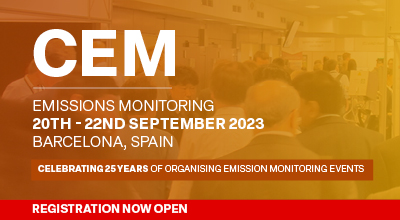| Abstract Title: | Continuous Mercury Emission Monitoring in low concentration ranges (< 5 µg / Nm3) |
| Presenter Name: | Mr Juergen Reinmann |
| Co-authors: | Mr Ryan Goater |
| Company/Organisation: | ENVEA GmbH |
| Country: | Germany |
Abstract Information :
In the BAT Reference documents (BREF) for "Large combustion plants" (LCP) and “Waste Incineration” the continuous emission monitoring of mercury is requested according the BREF conclusions. The LCP-BREF was already implemented into national regulations. E.g. in Germany is requested according to the 13. BImSchV a continuous monitoring of the mercury emissions and the daily emission limit (ELV) value was defined as 20 µg/m3 for solid fuels and 5 µg/m3 for biomass plants. For waste incineration in Germany the 17. BImSchV needs to be revised. Continuous monitoring is proposed with a nominal daily ELV of 10 µg/m3 and there remains the potential to reduce the daily ELV to 5 µg/m3. Due to the lowering of the future emission limits for mercury in the plants concerned, new emission measuring devices are required that measure accurately and reproducibly at the low concentration values. Beside these new requirements the revision of the BREF-document for cement kilns has started and according to the initial discussions, it is quite probable that continuous emission monitoring of the mercury emissions will be requested. In recent years, several new systems have already been introduced to the market, which meet the necessary measurement requirements in the concentration range of 5 – 15 μg/Nm3. This presentation describes the use of the new continuous emission monitor (CEM) SM-5 to record the Hg emissions in the concentration range of 3 – 10 μg/Nm3. In addition to the description of the measurement setup of this new system, results from measurements at waste incineration plants are presented. Specific in municipal waste incinerators (MWI) with inhomogeneous fuel it is very important to measure very early in the process, which means specifically the raw gas mercury concentrations, before the flue gas control devices. This supports the goals to optimize the flue gas cleaning and prevent exceeding of the ELVs at the stack. Especially in waste incineration plants, the use of mercury analyzers to measure the raw gas concentration is becoming increasingly important. Such measurements can be used for process control of mercury reduction in order to prevent the limit value on the clean gas side from being exceeded as far as possible in the event of the occurrence of a mercury peak in the raw gas by means of rapid control in the reduction stage. This presentation will describe the QAL1 certified SM-5 Hg-CEM and present measurements from the clean gas side, with comparison to measurements from the raw gas, to qualify the efficiency of the mercury abatement stage. It is proposed here that only with integrated, in-process raw gas monitoring will plant operators be able to guarantee that future lower ELVs will be met.

